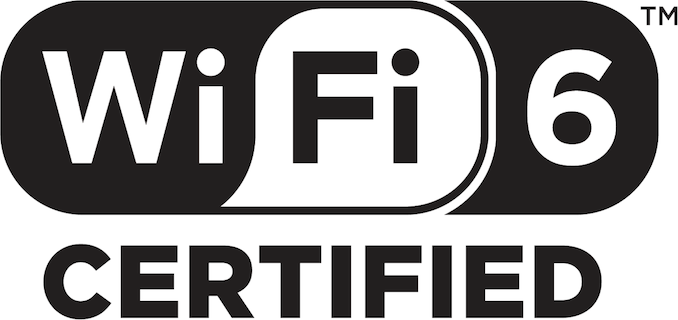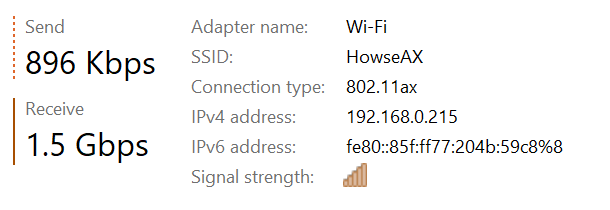AT 101: Wi-Fi 6 And Why You Want It
by Brett Howse on February 12, 2020 8:00 AM ESTTo The Future
If the question is do you need Wi-Fi 6, the answer is most assuredly “maybe”. The performance improvements are substantial, but really rely on a very strong signal to get the most data throughput. Most of the new features of Wi-Fi 6 focus on the influx of devices to the standard, and dealing with many devices connected to the same access point, or devices trying to share spectrum when connected to different access points.
The addition of Orthogonal Frequency Division Multiple Access to the Wi-Fi 6 standard will likely be the most impactful change to this revision. It will allow access points to carve up their channels into smaller slices, allowing more devices to communicate at the same time with less overhead. Each device will lose out on peak throughput, but the reduced latency should help a lot, especially in very dense environments. It should help with excessive overhead on the network layer when multiple devices are sending many small packets at once, which is a very common scenario, especially in an office or stadium situation.
Multi-User MIMO was in the Wi-Fi 5 specification as an optional implementation, and as such it did not really take off. Wi-Fi 6 should make this more prevalent, and also adds support to the MU-MIMO on the uplink, not just the downlink side. This will increase the capacity of access points for higher-speed use cases, but MU-MIMO did not get a lot of traction in Wi-Fi 5 so we will have to see how much adoption it gets in Wi-Fi 6.
The wider 160 MHz channels will offer significantly more throughput in the home environment, as we saw in our performance tests. As with the 1024-level QAM though, to see the biggest benefit you will need a strong signal. The vast majority of home networking is still limited to 1 Gigabit Ethernet, which puts Wi-Fi 6 into somewhat of an awkward spot, since it can transfer faster than most wired home networks, but even so, that is still a significant improvement over Wi-Fi 5 which would cap out around 600 Mbps on the best Wi-Fi adapters. If you work with a lot of large files, and you prefer to use Wi-Fi instead of the more consistent, yet cumbersome Ethernet, there’s still a nice boost to be had.
The future looks strong for Wi-Fi, and the Wi-Fi Alliance has made some excellent revisions to their standard to help improve Wi-Fi for the next generation of devices. As with any standards change, the impacts will not be seen right away. Both the access point, and the client need to be leveraging the new standard for the improvements to be noticeable. We’ve already seen the latest generation of smartphones start to offer Wi-Fi 6, and there’s been some movement in the PC space as well with Intel’s Project Athena. Anyone looking at a new router today should certainly opt for a Wi-Fi 6 model, but there’s likely not a major need for most people to move from Wi-Fi 5 access points right away. If you live in a heavily congested wireless area, the advantages of features like BSS coloring and Spatial Frequency Reuse should help out in those scenarios, but for people looking at purely performance, Wi-Fi 6 somewhat runs into a wall of its own making, since it can now transfer at over Gigabit speeds on a typical 2x2:2 connection. But who are we to question performance?












149 Comments
View All Comments
Axiomatic - Wednesday, February 12, 2020 - link
That all sounds great but I will wait for someone serious like Ubiquiti to release a device. Combo Router/WAN devices are silly. I don't need a new router. I only need new WAN devices with WI-FI6.yeeeeman - Wednesday, February 12, 2020 - link
This is only the beginning. Next wifi client solutions will get concurrent dual band and ultra high bands like 6Ghz.flyingpants265 - Wednesday, February 12, 2020 - link
I don't.PeachNCream - Wednesday, February 12, 2020 - link
I would want WiFi 6 if I could use it for anything. At the moment, the only broadband provider in my area is Century Link DSL at 10mbit. Internally device-to-device data transfer happens rarely. I had an old phone with a microSD card running as a file server for quick transfers, but I mainly use a 1TB 2.5 inch HDD in a USB 3.0 casing since its faster even on my one laptop that only has USB 2.0 ports. None of my computers supports anything newer than 802.11n either. No smart home devices here. I've worked as a tech professional for more than two decades so things are as analog and offline as possible at my place.regsEx - Wednesday, February 12, 2020 - link
What about ODFMA? Does it work? How well?Vitor - Thursday, February 13, 2020 - link
Lol @ people in this commenct section complaining about having only 200mb/s Internet. Poor you with a connection that can only deal with 10 4k streams of netflix.Dodozoid - Thursday, February 13, 2020 - link
I didn't get it. Does it make sense to get wifi 6 AP for wifi 5 clients in wifi 4 and 5 infested residential building?syleishere - Thursday, February 13, 2020 - link
You guys have to understand that wired connections are on their way out because with wireless, you can split more spectrums in the air for more thoroughput. Air fiber will be faster than your wired 1gb connection. 3 SSD's in a raid 0 would more than handle 3gbps. So it's your wireless card you want to upgrade. There are still purposes for wired, like linking to a database server with link agragation, but for majority of people, a good wireless card will get you speeds way above 1gbps so you can download those torrents faster lolPeachNCream - Thursday, February 13, 2020 - link
Are you aware there are faster than 1gbit connection speeds available over twisted pair copper?Dug - Thursday, February 13, 2020 - link
No offense, but you need to learn about networking before assuming what you do.